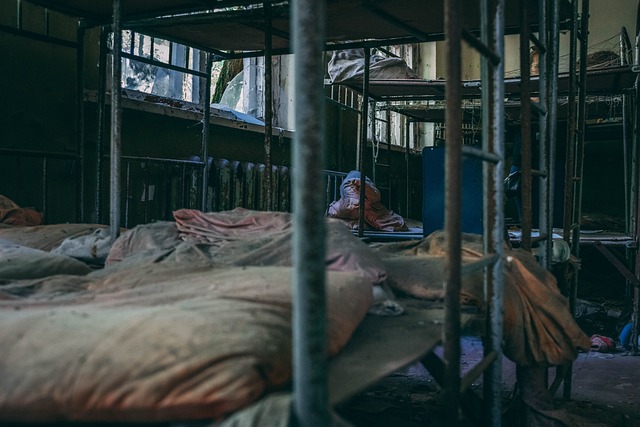San Antonio's winters pose risks of burst pipes due to freezing water lines, particularly in older homes or poorly insulated properties. To prevent damage, homeowners and contractors should insulate exposed pipes, apply heat tape, and provide thermal protection around water meters and valves. Regular maintenance, including optimal hot water heater temperatures, is crucial. These measures safeguard investments and streamline post-disaster reconstruction by preventing costly plumbing disasters and minimizing mold and water damage from burst pipes. Using moisture-resistant and quick-drying materials like fire-resistant gypsum board for drywall and vinyl or laminate for flooring further ensures durability in flood-prone areas.
In San Antonio, where winters can be harsh, understanding the impact on infrastructure is crucial. This article delves into the challenges posed by freezing temperatures, specifically focusing on preventing burst pipes that often lead to extensive property damage. We explore strategic solutions, highlighting efficient disaster reconstruction techniques for drywall and flooring replacement. By implementing these measures, homeowners can better navigate winter’s wrath, ensuring their properties are protected against potential disasters, especially in preventing burst pipes during San Antonio’s chilly seasons.
- Understanding Winter's Impact on San Antonio's Infrastructure
- Strategies for Preventing Burst Pipes and Minimizing Damage
- Efficient Disaster Reconstruction: Drywall and Flooring Replacement Techniques
Understanding Winter's Impact on San Antonio's Infrastructure

San Antonio, like many cities across Texas, faces unique challenges during the harsh winter months. One of the primary concerns is preventing burst pipes, which can cause significant damage to homes and infrastructure. The extreme cold can lead to water lines freezing, resulting in pipes bursting and causing extensive water damage. This is especially problematic for older homes or those with inadequate insulation.
To mitigate this issue, homeowners and contractors in San Antonio should focus on proactive measures. These include insulating exposed pipes, using heat tape, and adding thermal protection around water meters and valves. By taking these steps, residents can reduce the risk of burst pipes during winter, ensuring a smoother reconstruction process post-disaster while also protecting their investment in flooring and drywall replacements.
Strategies for Preventing Burst Pipes and Minimizing Damage

To prevent burst pipes during winter in San Antonio, a proactive approach to insulation and protection is essential. Homeowners should focus on sealing any gaps or cracks around pipes that are exposed or prone to extreme temperature changes. Using weatherproofing tape or foam insulation can create an additional barrier against freezing temperatures, minimizing the risk of pipe bursts. Additionally, installing heat tape or thermal guards on pipes in vulnerable areas can maintain a consistent, warm temperature, preventing water from freezing.
Regular maintenance is key to minimizing damage. Checking pipes for any signs of wear and tear, especially during colder months, allows for timely repairs. Insulating hot water heaters and keeping them at optimal temperatures also contributes to overall pipe health. Homeowners should consider these strategies as part of their disaster reconstruction plan, ensuring that their homes are better equipped to withstand San Antonio’s winter conditions and preventing costly plumbing disasters.
Efficient Disaster Reconstruction: Drywall and Flooring Replacement Techniques

When disaster strikes, whether it’s a flood, fire, or storm, efficient reconstruction is key to a swift recovery for any property owner in San Antonio. One critical aspect often overlooked but crucial for a seamless rebuild is the proper replacement of drywall and flooring. During winter, preventing burst pipes is an additional challenge that must be tackled to avoid further damage.
Efficient techniques involve using moisture-resistant materials for drywall, such as gypsum board treated for fire resistance, which can withstand higher humidity levels and prevent mold growth. For flooring, water-permeable options or quick-drying materials like vinyl or laminate are ideal choices, especially in areas prone to flooding. Additionally, implementing robust insulation and sealing strategies can help regulate temperature and moisture, preventing pipes from freezing and bursting during the winter season. These measures ensure a more durable reconstruction, minimizing future disruptions and costs associated with water damage repair.
In light of the above, efficient disaster reconstruction, particularly through drywall and flooring replacement techniques, is crucial for swiftly recovering from winter-related damage in San Antonio. By understanding the impact of winter on local infrastructure and implementing strategies to prevent burst pipes, residents can minimize structural harm. When disasters strike, these proactive measures ensure a smoother recovery process, allowing folks to get back to their lives more promptly. Remember that, in the face of challenging conditions, navigating efficient reconstruction is key to fostering resilience within the community.
